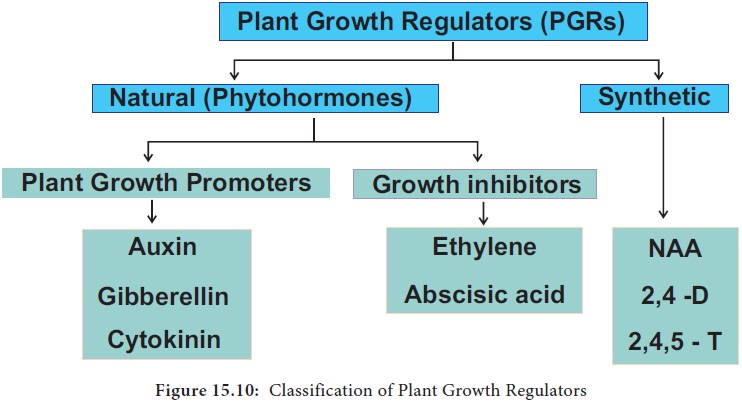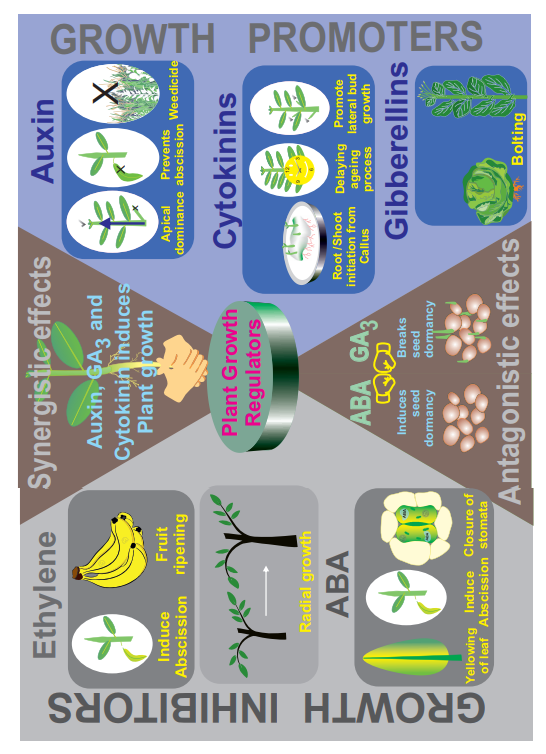classification, Characteristics of phytohormones, Synergistic and Antagonistic effects - Plant Growth Regulators | 11th Botany : Chapter 15 : Plant Growth and Development
Chapter: 11th Botany : Chapter 15 : Plant Growth and Development
Plant Growth Regulators
Plant Growth Regulators
Plant Growth Regulators (chemical messenger) are defined as organic substances which are synthesized in minute quantities in one part of the plant body and transported to another part where they influence specific physiological processes. Five major groups of hormones viz., auxins, gibberellins, cytokinins, ethylene and abscisic acid are presently known to coordinate and regulate growth and development in plants. The term phytohormones is implied to those chemical substances which are synthesized by plants and thus, naturally occurring. On the other hand, there are several manufactured chemicals which often resemble the hormones in physiological action and even in molecular structure. Recently, another two groups, the brassinosteroids and polyamines were also known to behave like hormones.
1. Plant growth regulators – classification
Plant Growth Regulators are classified as natural and synthetic based on their source and a detailed flow diagram is given in Figure 15.10.

2. Characteristics of phytohormones
i. Usually produced in tips of roots, stems and leaves.
ii. Transfer of hormones from one place to another takes part through conductive systems.
iii. They are required in trace quantities.
iv. All hormones are organic in nature.
v. There are no specialized cells or organs for their secretion.
vi. They are capable of influencing physiological activities leading to promotion, inhibition and modification of growth.
3. Synergistic and Antagonistic effects
i. Synergistic effects: The effect of one or more substance in such a way that both promote each others activity. Example: Activity of auxin and gibberellins or cytokinins.
ii. Antagonistic effects: The effect of two substances in such a way that they have opposite effects on the same process. One accelerates and other inhibits. Example: ABA and gibberellins during seed or bud dormancy. ABA induces dormancy and gibberellins break it.

Climacteric fruits: In most of the plants, there is sharp rise in respiration rate near the end of the development of fruit, called climacteric rise. Such fruits are called climacteric fruits. The ripening on demand can be induced in these fruits by exposing them to normal air containing about 1 ppm of ethylene. A liquid called ethephon is being used in fruit ripening as it continuously releases ethylene.
Example: Tomato, Apples, Banana, Mango.
Non climacteric fruits: All fruits cannot be ripened by exposure to ethylene. Such fruits are called non-climacteric fruits and are insensitive to ethylene.
Example: Grapes, Watermelon, Orange.
Related Topics